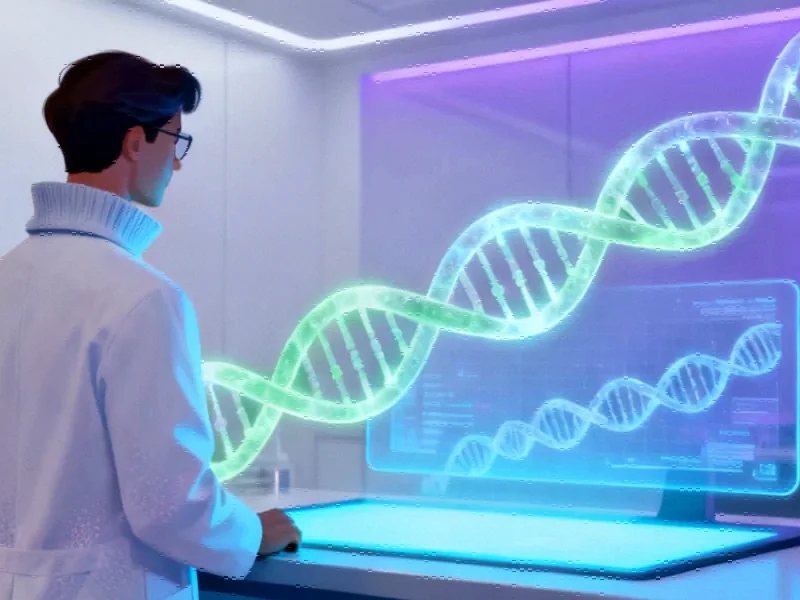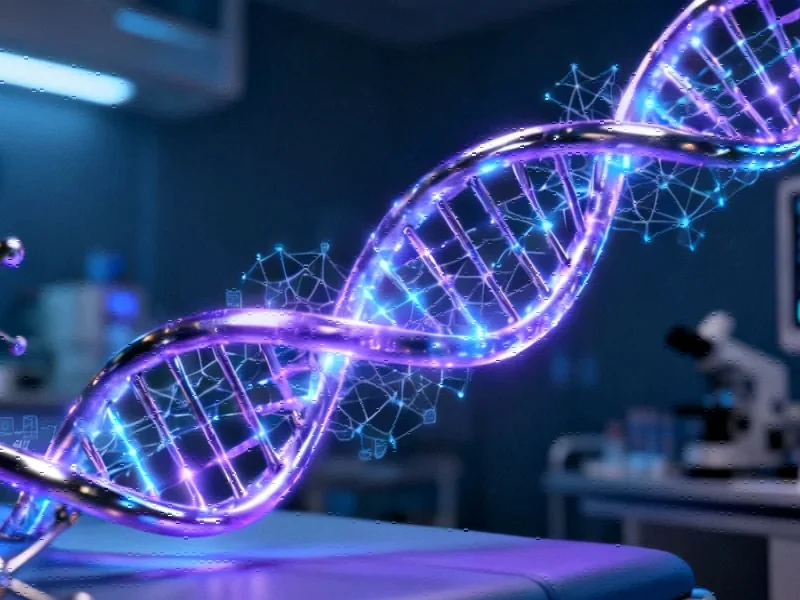The New Research Assistant: Claude Enters Life Sciences
In a strategic move that signals artificial intelligence’s growing role in scientific discovery, Anthropic has announced the specialized adaptation of its Claude chatbot for life sciences applications. The San Francisco-based AI company, valued at $170 billion, is integrating its technology directly into the tools researchers use daily—from laboratory management systems to genomic analysis platforms and biomedical databases. This represents a significant shift in how AI companies are approaching industry developments in specialized fields.
Transforming Research Timelines
The impact on research efficiency appears substantial. Pharmaceutical giant Novo Nordisk reported reducing clinical study documentation from over 10 weeks to just 10 minutes using Anthropic’s AI model. Similarly, drug developer Sanofi revealed that the majority of its employees now use Claude daily. These productivity gains come at a time when the broader technology sector faces infrastructure challenges, as highlighted by the recent AWS outage that exposed critical cloud infrastructure vulnerabilities.
The Competitive Landscape Heats Up
Anthropic is not alone in recognizing life sciences as AI’s next frontier. Recent announcements from OpenAI and Mistral about new scientific research units, coupled with Google’s “co-scientist” tool and Gemma model’s discovery of a potential cancer therapy pathway, indicate a broader industry trend. According to Eric Kauderer-Abrams, Anthropic’s head of life sciences, the company’s differentiation lies in its focus on amplifying individual scientists’ capabilities rather than attempting to replace them entirely. “We’re much more focused on amplifying the capabilities of individual scientists and building tools that accelerate the scientists’ workflows than other companies are,” Kauderer-Abrams explained.
Technical Innovations Driving Adoption
Anthropic’s approach addresses several critical barriers that have previously limited AI adoption in pharmaceutical research. The company has significantly reduced instances of “hallucinations”—factual errors generated by AI models—while implementing audit trails for regulatory compliance and enabling verification of every insight against original sources. These technical improvements occur alongside other remarkable technology milestones across different sectors, demonstrating how innovation continues to accelerate globally.
Overcoming Historical Hurdles
Despite the enthusiasm, the path to AI-driven drug discovery remains challenging. To date, no AI-discovered drugs have received regulatory approval, with many candidates failing in clinical trials. The primary obstacle has been obtaining sufficient high-quality data to create general-purpose algorithms capable of solving diverse biomedical problems. This challenge mirrors complexities seen in other global markets, such as China’s market paradox where record capital inflows occur amid economic uncertainties.
Safety and Ethical Considerations
Anthropic has implemented significant safeguards alongside its life sciences push. The company explicitly bans requests related to prohibited agents that could be used to create chemical weapons, addressing ethical concerns that have emerged as AI capabilities expand. This responsible approach to deployment reflects growing industry awareness about the need for proper governance frameworks, similar to concerns raised in recent examinations of corporate accountability in technology sectors.
The Data Advantage in Life Sciences
Kauderer-Abrams highlighted biology’s unique advantage for AI applications: the existence of massive, publicly available datasets covering genomics, protein sequencing, and other biological information. “In life sciences, that’s one area where pretty much everyone can agree that we can bring things that are unambiguously amazing,” he noted. The availability of these specialized datasets enables more effective model training compared to other scientific domains. For those interested in following this expansion more closely, detailed coverage of Anthropic’s Claude AI expansion into life sciences provides additional context and updates.
Future Implications and Industry Trajectory
The recent breakthroughs in large language models, including gold medal-level performances by Google DeepMind and OpenAI in prestigious coding competitions, suggest that AI’s scientific capabilities are rapidly maturing. As Anthropic and competitors continue to refine their approaches, the life sciences industry stands to benefit from accelerated research cycles, reduced costs, and potentially groundbreaking discoveries. The convergence of AI and biotechnology represents one of the most promising frontiers for related innovations that could fundamentally reshape healthcare and drug development in the coming decade.
This article aggregates information from publicly available sources. All trademarks and copyrights belong to their respective owners.
Note: Featured image is for illustrative purposes only and does not represent any specific product, service, or entity mentioned in this article.



